|
Ocean Falls Artifacts
Donation By: Henry
S. Ostrowski
Spencer Microscope Model No.74
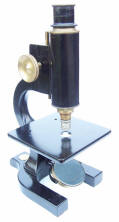
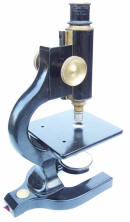
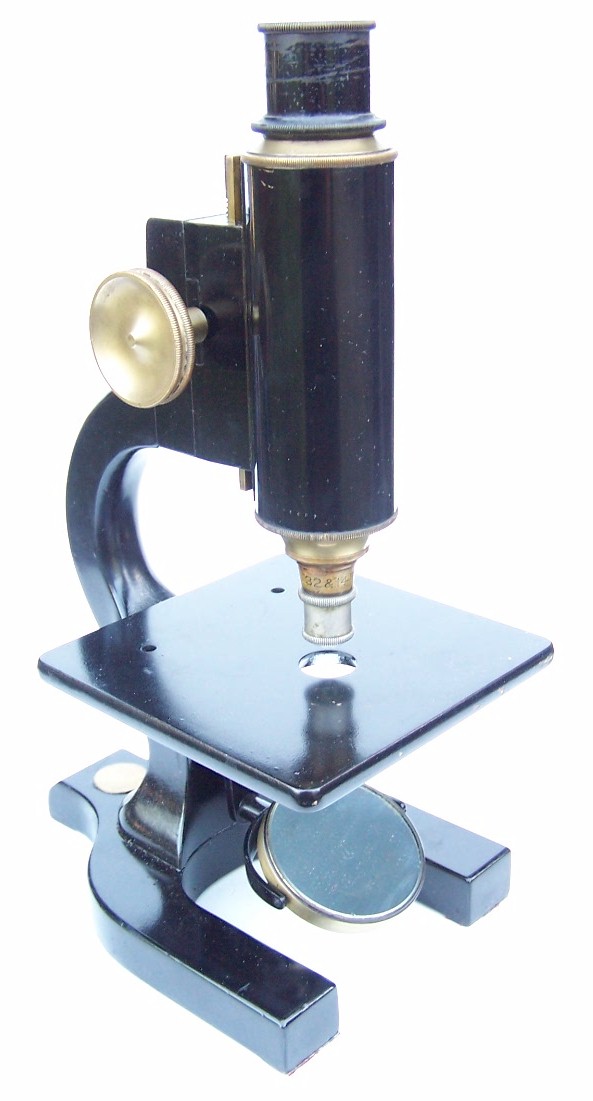
As per written in a catalogue:
It is satisfactory for elementary school work or in any
laboratory work in which the required magnification is not over 350
diameters. It serves for commercial purposes in examining starches,
drugs, earths, cements, fibers, meats for suspected parasites, paper
making materials, etc.
BODY TUBE: Of standard size with draw tube fixed at 160 millimeters.
ARM AND BASE: Made from a single casting providing a convenient handle
for the instrument and ample space for manipulation of large objects on
the stage. Its rigidity especially recommends it for use by
non-technical workers.
STAGE: Rectangular, 110 x 105 mm.; of new composition, solid throughout;
harder and more durable than rubber; will not warp or fade.
FOCUSING ADJUSTMENTS: Diagonal cut rack and pinion only.
SUBSTAGE: A disc diaphragm with a series of circular openings to provide
for varying intensity of illumination. A plane and concave mirror of
standard size is mounted on a swing arm.
CABINET: Polished hardwood.
ORIGINAL PRICE: $38.00 cir.1935
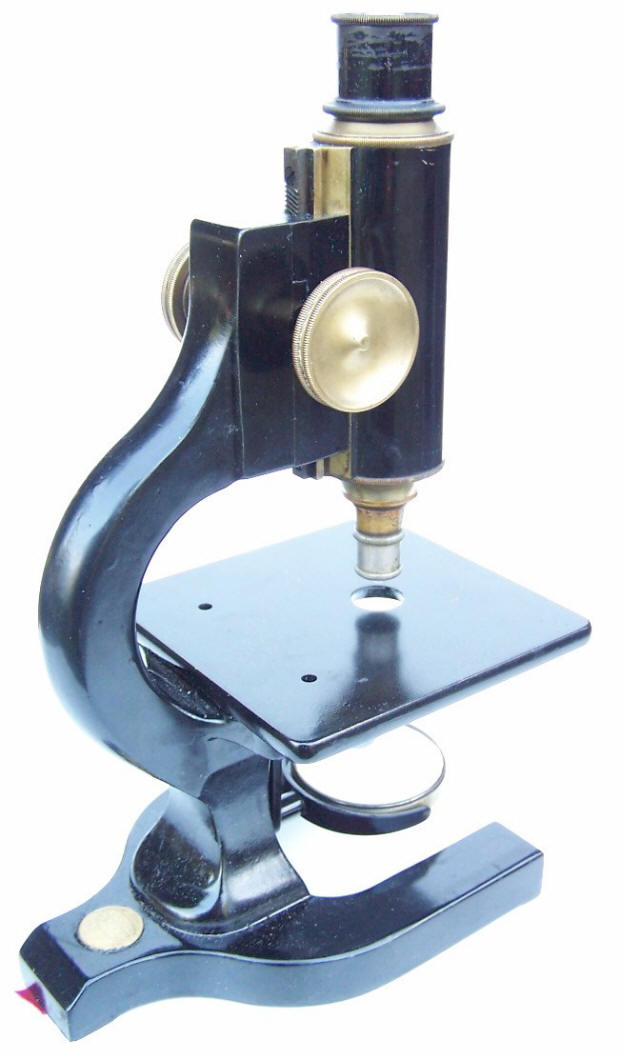

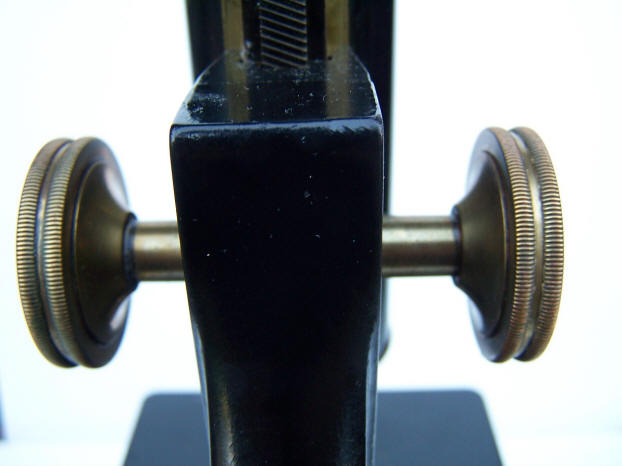
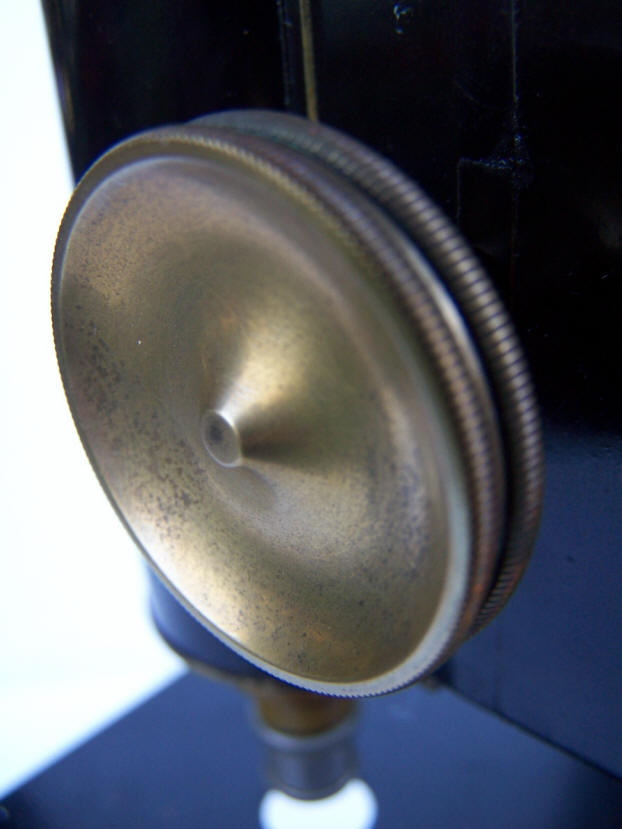
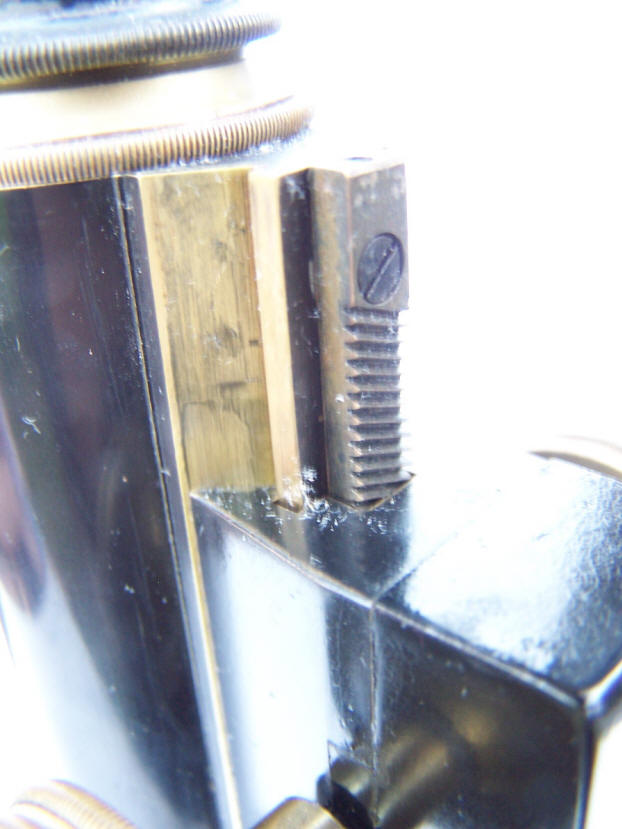
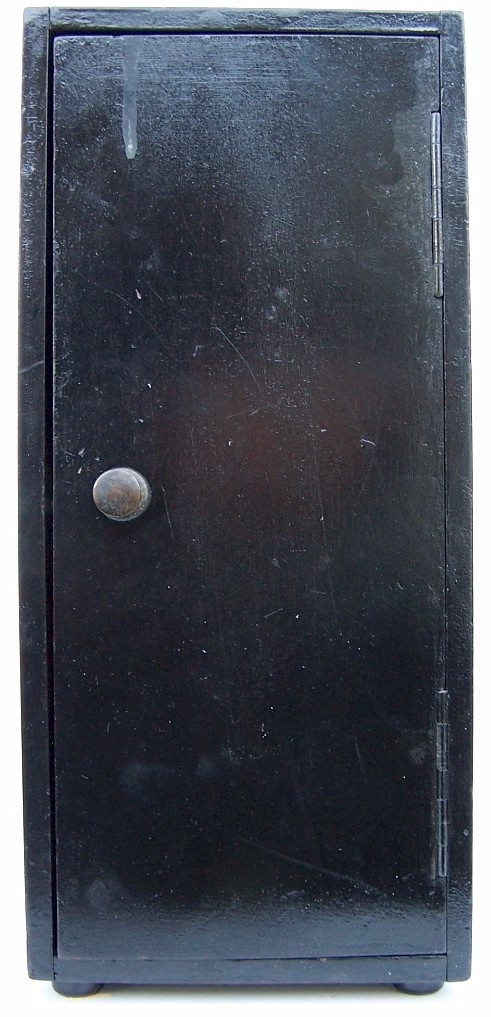
Charles
A. Spencer is known as America's first microscope maker. He was born in
1813, in Madison county, NY, in what would later become Canastota. In
1838, he had an ad printed, announcing himself to be a maker of
microscopes and telescopes, including Dr. Goring's Engiscope (a
reflecting microscope similar to Amici's). By 1840, he published a
catalog listing numerous microscopes, reflecting telescopes, and other
instruments. Spencer is thought to have made the first American
achromatic objective, and, by the late 1840's had acquired a reputation
for his excellent quality objectives of great angle of aperture. In
1854, Spencer was joined in business by E.K. Eaton. Several catalogs are
known published under the name "Spencer & Eaton. Microscopes made by
Spencer in the 1840's, signed "C.A. & H. Spencer refer to Charles'
cousin, Hamilton, not his son, Herbert. Herbert R. Spencer worked in his
father's shop and became a partner after Eaton left the business, around
1865. Until 1875, the instruments were marked "C.A. Spencer & Sons,
Canastota". In 1875, the Spencers moved to Geneva, NY, to build
microscopes for the Geneva Optical Co. During the next three years,
their instruments were marked, "C.A. Spencer & Sons for Geneva Optical
Company". In 1877, this association was terminated and their stands were
marked, "C.A. Spencer & Sons, Geneva. Charles A. Spencer died in 1881.
Exerted from:
http://www.americanartifacts.com/smma/micro/spencer.htm
|